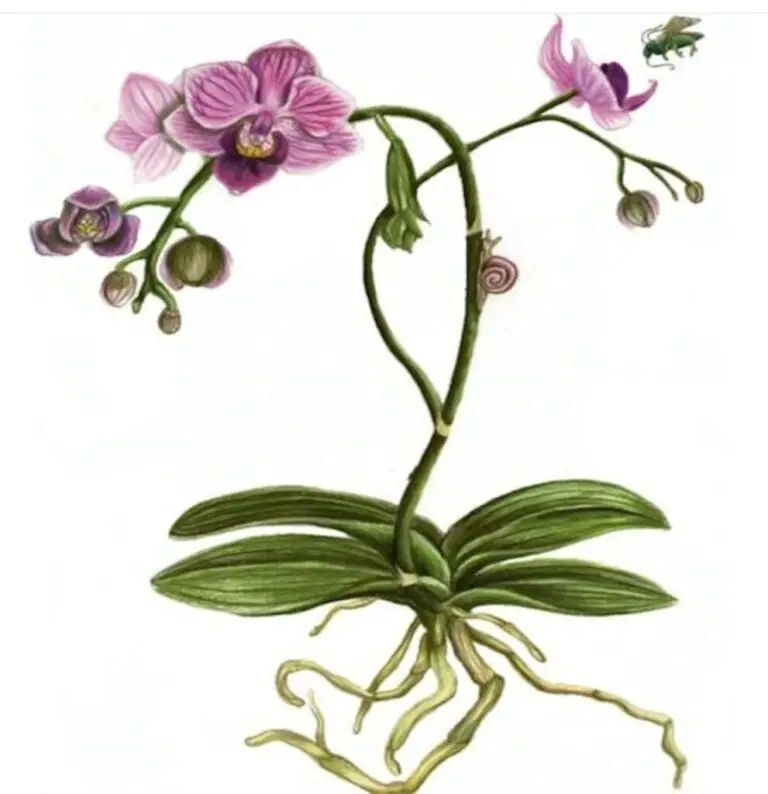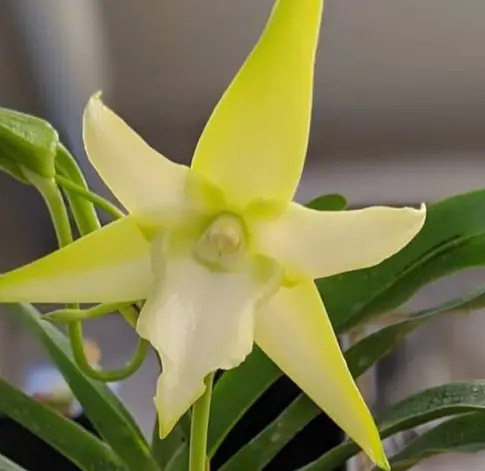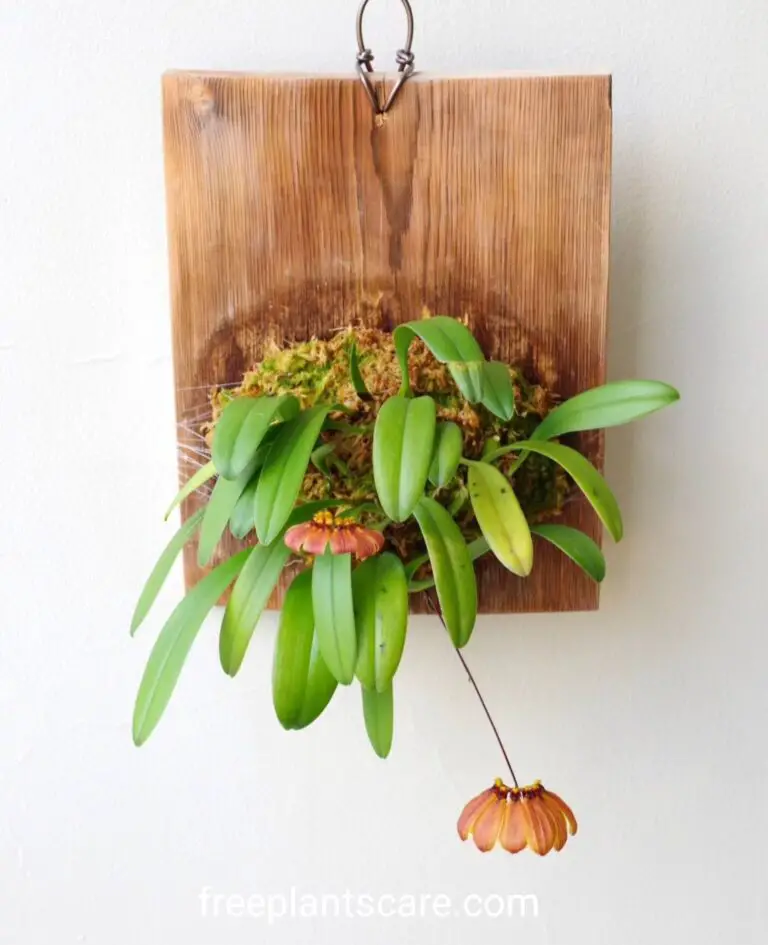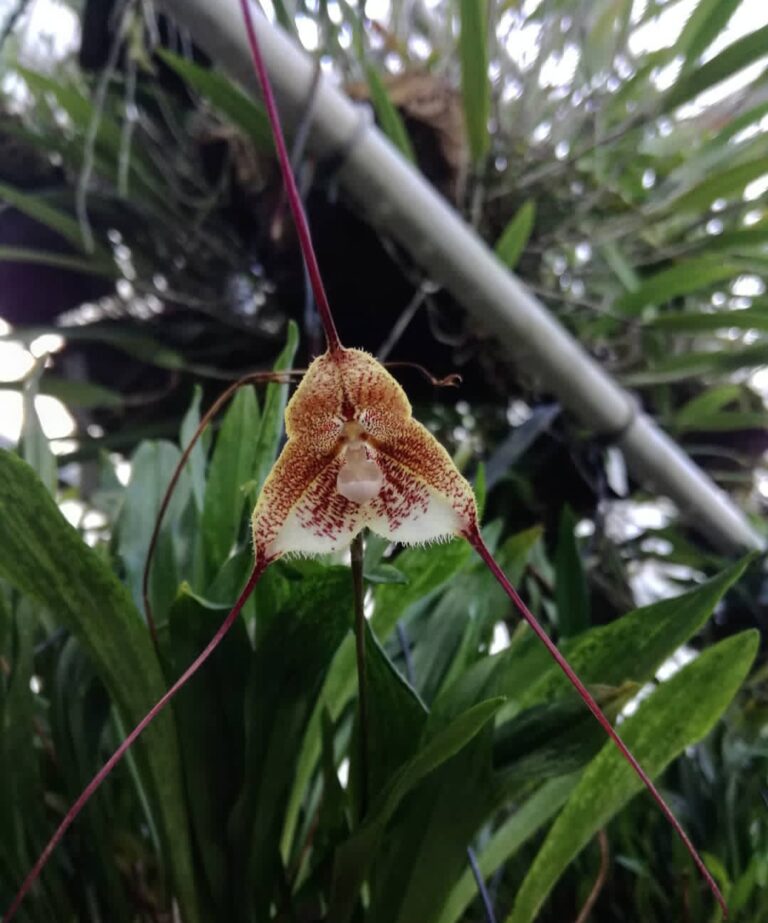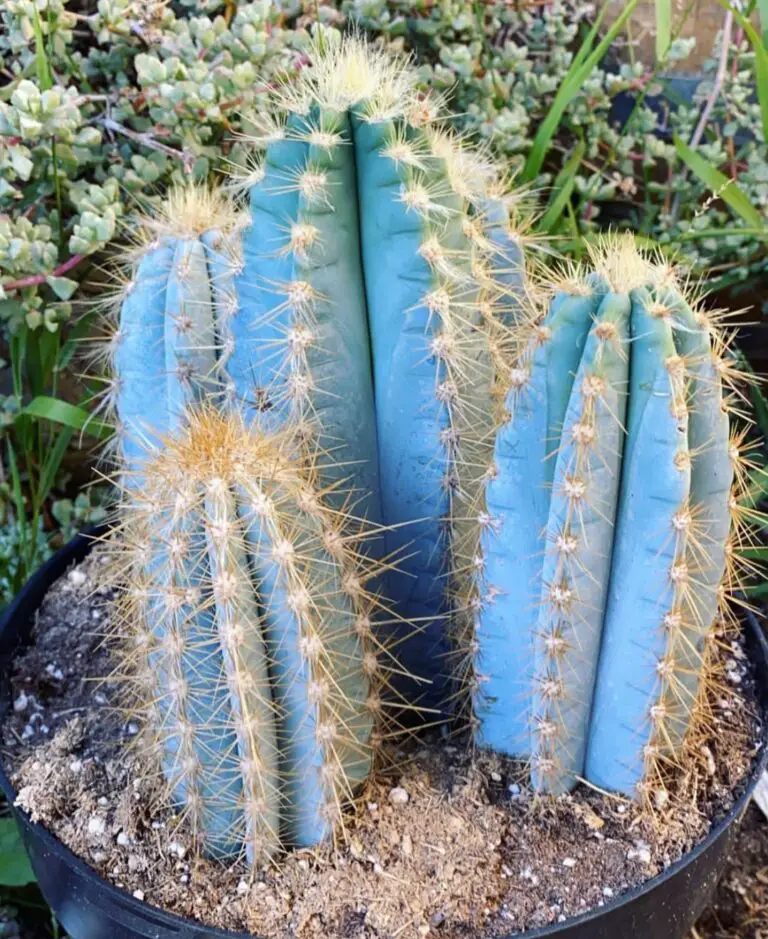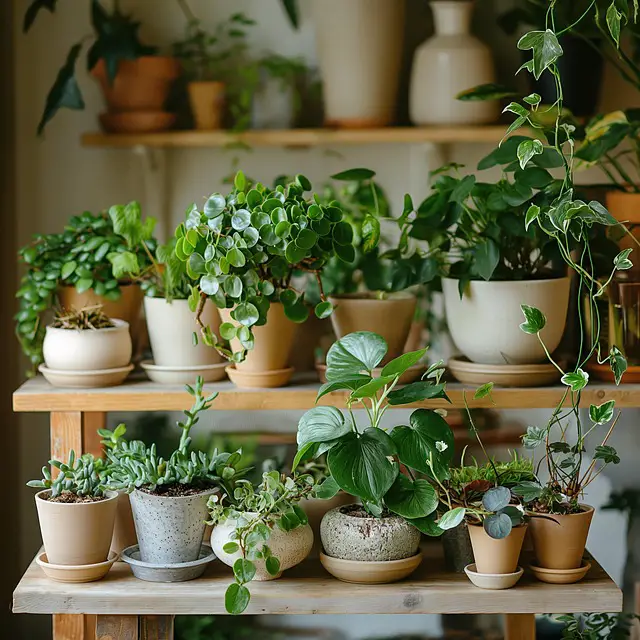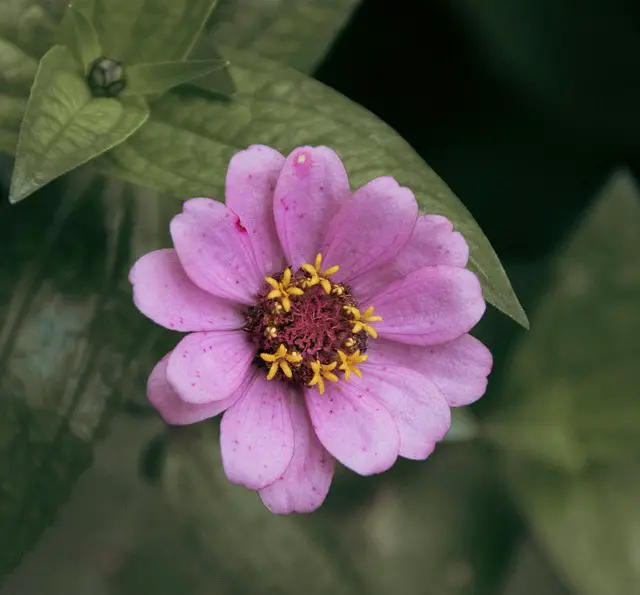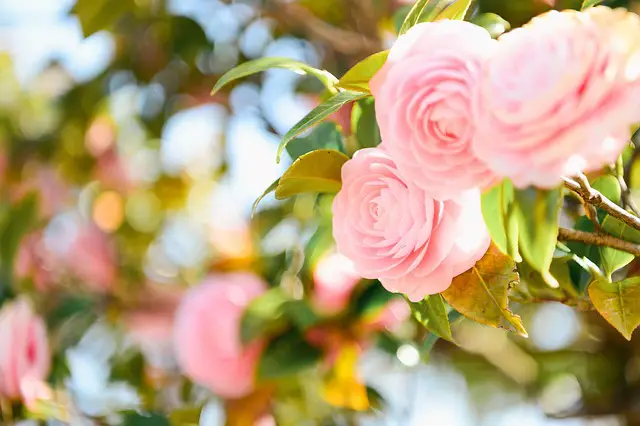- 1 Masdevallia Chaparana care
- 2 Masdevallia Chaparana light requirements
- 3 Masdevallia Chaparana pot requirements
- 4 Masdevallia Chaparana temperature and humidity requirements
- 5 Masdevallia Chaparana potting mix requirements
- 6 Masdevallia Chaparana Propagating
- 7 Masdevallia Chaparana Common Pests and Diseases
- 8 Pests:
- 9 Diseases:
- 10 How to fix pests and diseases
- 11 FAQ
Masdevallia Chaparana is a stunning orchid species that boasts unique characteristics and requires special care to thrive. With its vibrant colors and intricate flowers, it’s no wonder why many orchid enthusiasts are drawn to this species. However, growing Masdevallia Chaparana can be challenging, especially for beginners. In this guide, we will explore the best practices for caring for and growing Masdevallia Chaparana, including the ideal growing conditions, watering and fertilizing tips, and pest and disease management strategies. By following these guidelines, you can enjoy the beauty of this magnificent orchid in your own home or garden.
Masdevallia Chaparana care

Masdevallia Chaparana is a species native to South America, specifically found in the Andean cloud forests of Peru. Its natural habitat is characterized by cool temperatures, high humidity, and low light levels, making it well-suited to indoor growing conditions. However, Masdevallia chaparana can be sensitive to changes in its environment, such as sudden temperature fluctuations, so it’s important to provide consistent conditions for optimal growth.
One of the unique features of Masdevallia Chaparana is its velvety petals, which make it standout among other orchid species. The flowers typically bloom in the winter and early spring, and they can last for several weeks with proper care. Additionally, Masdevallia Chaparana has a compact growth habit, making it an ideal choice for small growing spaces such as windowsills or terrariums.
To successfully care for Masdevallia Chaparana, it’s essential to understand its specific needs. This includes providing the right amount of water and fertilizer, as well as ensuring adequate air circulation and humidity levels. Furthermore, as with any plant, it’s important to monitor for pests and diseases and take prompt action if necessary.
Overall, growing Masdevallia Chaparana can be a rewarding experience for orchid enthusiasts who are willing to put in the effort to provide the ideal growing conditions. With its striking appearance and unique characteristics, Masdevallia Chaparana is sure to be a standout in any collection of orchids.
Masdevallia Chaparana light requirements
Masdevallia Chaparana requires a specific amount and quality of light to thrive. In its natural habitat, this orchid species typically grows in low-light conditions under the canopy of the forest. As a result, it’s important to replicate these conditions when growing Masdevallia chaparana indoors.
In general, Masdevallia Chaparana prefers bright, indirect light. This means that it should be positioned near a window or under a grow light, but not in direct sunlight. Direct sunlight can cause the leaves to burn and the flowers to wilt prematurely, so it’s important to provide shading or filter the light if necessary.
It’s also important to note that Masdevallia Chaparana is sensitive to changes in light levels. Sudden changes, such as moving the plant from a low-light to a high-light environment, can cause stress and damage. Therefore, it’s best to acclimate the plant gradually to new light conditions over a period of several days to avoid shock.
Overall, providing the ideal amount and quality of light is crucial for the health and growth of Masdevallia Chaparana. By replicating its natural growing conditions and taking care to avoid sudden changes, you can help this unique orchid species thrive in your home or garden.
Masdevallia Chaparana watering requirements
Watering is an essential aspect of caring for Masdevallia chaparana, as this orchid species requires specific moisture levels to thrive. In its natural habitat, Masdevallia Chaparana receives frequent rainfall and high humidity levels, so it’s important to replicate these conditions when growing it indoors.
One key factor to consider when watering Masdevallia Chaparana is the potting medium. This orchid species prefers a moist but well-draining medium, such as a mix of sphagnum moss and perlite or bark. It’s important not to let the medium dry out completely between waterings, as this can cause stress and damage to the plant. However, overwatering can also be harmful, as it can lead to root rot and other issues.
To water Masdevallia Chaparana properly, it’s important to use room-temperature water and to avoid getting water on the leaves or flowers. This can cause damage and increase the risk of fungal or bacterial infections. Water should be applied evenly across the medium, taking care not to let it pool or accumulate at the bottom of the pot.
Another key aspect of watering Masdevallia Chaparana is humidity. This orchid species prefers high humidity levels (around 60–80%) to thrive. This can be achieved by using a humidifier, placing the plant on a tray of moist pebbles, or misting the leaves regularly.
Overall, providing the ideal amount and quality of water and humidity is crucial for the health and growth of Masdevallia Chaparana. By understanding its specific watering requirements and taking care to avoid common pitfalls, you can help this unique orchid species thrive in your home or garden.
Masdevallia Chaparana pot requirements
Pot selection is an important aspect of growing Masdevallia Chaparana, as this orchid species has specific potting requirements. Masdevallia Chaparana has a compact growth habit, which makes it well-suited to small pots or baskets.
When selecting a pot for Masdevallia Chaparana, it’s important to choose one that allows for adequate drainage and air circulation. A pot with several drainage holes is ideal, as it allows excess water to escape and prevents water from pooling at the bottom of the pot. Additionally, a pot with an open design, such as a basket, can provide better air circulation, which is important for preventing fungal or bacterial infections.
Another important factor to consider when selecting a pot for Masdevallia Chaparana is the potting medium. As mentioned earlier, Masdevallia Chaparana prefers a moist but well-draining medium. A potting mix that is too heavy or compact can lead to issues with water retention and drainage, which can be harmful to the plant. A mix of sphagnum moss and perlite or bark is a good option for Masdevallia Chaparana.
It’s also important to note that Masdevallia Chaparana prefers to be slightly pot-bound. This means that the plant should not be repotted too often or placed in a pot that is too large. Repotting should be done only when necessary, and care should be taken not to damage the delicate roots during the process.
Overall, pot selection is an important aspect of caring for Masdevallia Chaparana. By choosing a pot that allows for adequate drainage and air circulation and using a suitable potting mix, you can help this unique orchid species thrive in your home or garden.
Masdevallia Chaparana temperature and humidity requirements
Temperature and humidity are crucial factors to consider when caring for Masdevallia chaparana, as this orchid species is native to cool and humid environments. Providing the ideal temperature and humidity levels can help Masdevallia Chaparana thrive and produce healthy, vibrant blooms.
In general, Masdevallia Chaparana prefers cool temperatures ranging from 55 to 70 °F (13 to 21 °C). It’s important to avoid exposing this orchid species to extreme temperature fluctuations or temperatures above 80 °F (27 °C), as this can cause stress and damage to the plant.
Humidity is also important for Masdevallia Chaparana, as this orchid species prefers high humidity levels ranging from 60 to 80%. Dry air can cause the leaves and flowers to dry out and wilt prematurely, so it’s important to provide adequate humidity. This can be achieved by using a humidifier, placing the plant on a tray of moist pebbles, or misting the leaves regularly.
In addition to providing the ideal temperature and humidity levels, it’s also important to avoid exposing Masdevallia Chaparana to cold drafts or sudden temperature changes. This can cause stress and damage to the plant and increase the risk of fungal or bacterial infections.
Overall, providing the ideal temperature and humidity levels is crucial for the health and growth of Masdevallia Chaparana. By understanding its specific temperature and humidity requirements and taking care to avoid common pitfalls, you can help this unique orchid species thrive in your home or garden.
Masdevallia Chaparana potting mix requirements
Choosing the right potting mix is crucial for the healthy growth of Masdevallia Chaparana. This orchid species has unique potting requirements, and using the wrong type of mix can lead to issues with drainage, water retention, and root health.
Masdevallia Chaparana prefers a potting mix that is moist but well-draining. A mix of sphagnum moss and perlite or bark is ideal, as it provides good moisture retention while allowing excess water to drain away from the roots. This type of mix also provides adequate aeration for the roots, which is important for preventing fungal or bacterial infections.
When preparing the potting mix for Masdevallia Chaparana, it’s important to ensure that the components are properly soaked and drained. Sphagnum moss should be soaked in water until it is fully saturated, and excess water should be squeezed out before use. Perlite or bark should be rinsed and soaked to remove any dust or debris before mixing.
It’s also important to note that Masdevallia Chaparana prefers to be slightly pot-bound, so it’s important to choose a pot that is just slightly larger than the root system. Repotting should only be done when necessary, and care should be taken not to damage the delicate roots during the process.
Overall, using the right potting mix is crucial for the health and growth of Masdevallia Chaparana. By using a mix of sphagnum moss and perlite or bark and taking care to prepare it properly, you can help this unique orchid species thrive in your home or garden.
Masdevallia Chaparana Propagating
Masdevallia Chaparana is an orchid species that is native to Peru. Propagating this plant can be done through various methods, including division, stem cuttings, and seed propagation.
Division: To propagate Masdevallia Chaparana through division, you need to gently remove the plant from its pot and separate the roots into smaller sections. Make sure each section has enough roots to support it, and replant each division into its own pot using a well-draining orchid mix.
Stem cuttings: You can also propagate Masdevallia Chaparana through stem cuttings. Take a cutting from a healthy stem with a sterile blade and plant it in a small pot filled with moist orchid mix. Keep the cutting in a warm, humid location and mist it regularly to encourage new growth.
Seed propagation: propagating Masdevallia Chaparana through seed is a bit more challenging, but it is possible. You can purchase seeds from reputable orchid suppliers or harvest them from the plant itself. Sow the seeds in a small pot with a sterile, well-draining orchid mix and keep them in a warm, humid location. It may take several months for the seeds to germinate and even longer for the plant to mature.
Regardless of the propagation method you choose, make sure to provide Masdevallia Chaparana with the right growing conditions, including bright but indirect light, high humidity, and regular watering with a balanced orchid fertilizer. With proper care, your propagated Masdevallia Chaparana can grow into a beautiful and healthy orchid plant.
Masdevallia Chaparana Common Pests and Diseases
Like all plants, Masdevallia Chaparana is susceptible to certain pests and diseases.
Pests:
Scale insects: these insects attach themselves to the plant’s leaves and suck out its sap, causing yellowing and stunted growth.
Spider mites: these tiny arachnids can cause leaf yellowing, leaf drop, and webbing on the plant.
Mealybugs can cause leaf curling and stunted growth because they create a waxy material that covers their bodies.
Diseases:
Root rot can be caused by overwatering, poorly draining soil, or fungal infections and can cause wilting, yellowing, and root decay.
Leaf spot: this fungal disease can cause brown or black spots on the leaves and may eventually cause the leaves to drop.
Virus: certain viruses can cause mosaic patterns on the leaves, stunted growth, and distorted flowers.
To prevent and manage pests and diseases, it is important to keep Masdevallia Chaparana in good health by providing it with proper growing conditions, such as good air circulation, proper watering and fertilizing, and regular cleaning of the plant and its pot. If you notice any signs of pest infestations or disease, it is important to act quickly and treat the plant with the appropriate remedy, which may include applying insecticidal soap or fungicides, pruning affected leaves or roots, or repotting the plant into fresh soil.
How to fix pests and diseases
To fix a plant that is suffering from pests or diseases, it is important to identify the problem first. Once you have identified the issue, you can take appropriate steps to remedy the problem. Here are some general tips on how to fix common pests and diseases in Masdevallia Chaparana:
Scale insects: Remove the scale insects manually with a cotton swab dipped in rubbing alcohol. You can also spray the plant with insecticidal soap or neem oil to control the infestation.
Spider mites: Wash the plant thoroughly with a strong stream of water to remove the spider mites. You can also spray the plant with insecticidal soap or neem oil to control the infestation.
Mealybugs: Remove the mealybugs manually with a cotton swab dipped in rubbing alcohol. You can also spray the plant with insecticidal soap or neem oil to control the infestation.
Root rot: Remove the plant from its pot and carefully inspect the roots. Trim away any brown or mushy roots and repot the plant into fresh, well-draining soil. Reduce watering until the plant recovers.
Leaf spot: Remove affected leaves and discard them. Avoid getting water on the leaves and improve air circulation around the plant to prevent further spread of the disease. You can also apply a fungicide to control the disease.
Virus: Unfortunately, there is no cure for viruses in plants. To prevent the virus from spreading, remove and discard infected leaves, disinfect your gardening tools, and avoid touching healthy plants after touching infected plants.
It is important to note that prevention is always better than cure when it comes to pests and diseases in plants. Maintain good plant hygiene, provide proper growing conditions, and inspect your plants regularly to catch any issues early on.
FAQ
How do you take care of a Masdevallia orchid?
Masdevallia orchids prefer cool and moist conditions, so it is important to keep them in a well-ventilated area with high humidity levels.
They also require bright, indirect light and should be protected from direct sunlight.Watering should be frequent but not excessive, with the roots should never be allowed to dry out completely.
How do you care for Masdevallia Veitchiana?
Masdevallia Veitchiana requires a cool and humid environment to thrive.
It should be kept in a bright but shaded area with good air circulation.
Watering should be done frequently to maintain moist soil, but it should not be waterlogged.
Fertilize sparingly with a balanced orchid fertilizer.
How do you care for Masdevallia Calura?
Masdevallia Calura prefers cool and moist conditions, similar to other Masdevallia species.
It should be kept in a well-ventilated area with high humidity levels and protected from direct sunlight
Watering should be frequent but not excessive, and the soil should not be allowed to dry out completely.
Fertilize with a balanced orchid fertilizer every 2-4 weeks during the growing season.
How do you grow Masdevallia Veitchiana?
Masdevallia Veitchiana can be grown in a well-draining potting mix or mounted on a piece of bark or other material.
It requires cool temperatures between 55-65°F (13-18°C) and high humidity levels of around 70-80%.
The plant should be watered frequently to maintain moist soil, and fertilized sparingly with a balanced orchid fertilizer.
It also requires bright but indirect light and good air circulation to thrive

